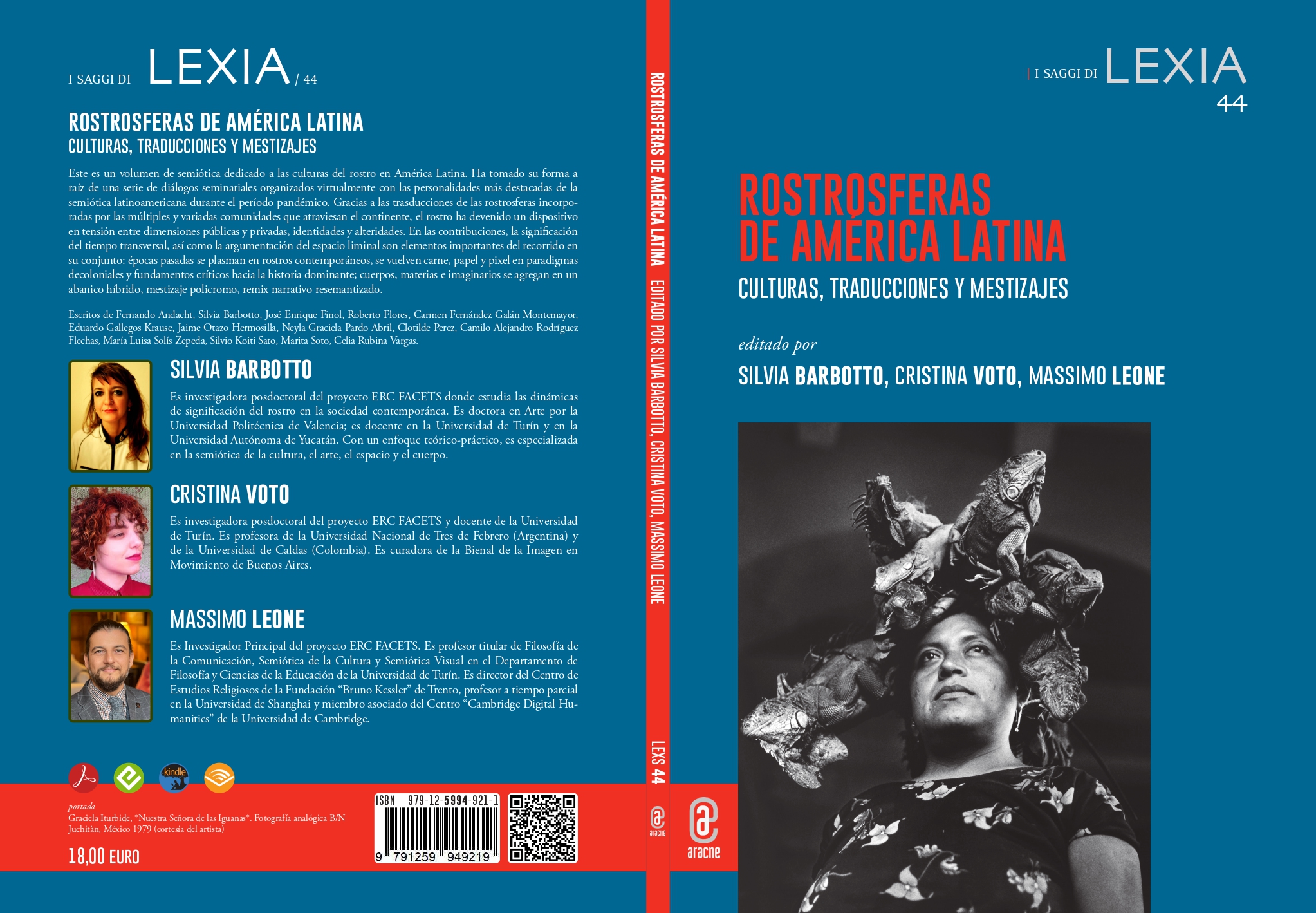Just out for the Italian publishing house Aracne (“I Saggi di Lexia”), a new book edited by Silvia Barbotto, Cristina Voto and Massimo Leone, Rostrosferas de América Latina. Culturas, traducciones, mestizajes [Latin America’s Rostrospheres. Cultures, translations, crossbreedings].
The book is available (in Spanish) in OPEN ACCESS.
SYNOPSIS
ENG
This is a volume of semiotics dedicated to the cultures of the face in Latin America. It has taken its shape as a result of a series of seminarial dialogues organized virtually with the most prominent personalities of Latin American semiotics during the pandemic period. Thanks to the translations of the rostrospheres incorporated by the multiple and varied communities that cross the continent, the face has become a device in tension between public and private dimensions, identities and alterities. In the contributions, the significance of transversal time, as well as the argumentation of liminal space, are important elements of the overall journey: past epochs are embodied in contemporary faces, they become flesh, paper and pixel in decolonial paradigms and critical decolonial paradigms and critical foundations for the dominant history; bodies, materials and imaginaries are aggregated in a hybrid range, polychrome crossbreeding, resemantized narrative remix.
SPA
Este es un volumen de semiótica dedicado a las culturas del rostro en América Latina. Ha tomado su forma a raíz de una serie de diálogos seminariales organizados virtualmente con las personalidades más destacadas de la semiótica latinoamericana durante el período pandémico. Gracias a las trasducciones de las rostrosferas incorporadas por las múltiples y variadas comunidades que atraviesan el continente, el rostro ha devenido un dispositivo en tensión entre dimensiones públicas y privadas, identidades y alteridades. En las contribuciones, la significación del tiempo transversal, así como la argumentación del espacio liminal son elementos importantes del recorrido en su conjunto: épocas pasadas se plasman en rostros contemporáneos, se vuelven carne, papel y pixel en paradigmas decoloniales y fundamentos críticos hacia la historia dominante; cuerpos, materias e imaginarios se agregan en un abanico híbrido, mestizaje policromo, remix narrativo resemantizado.


